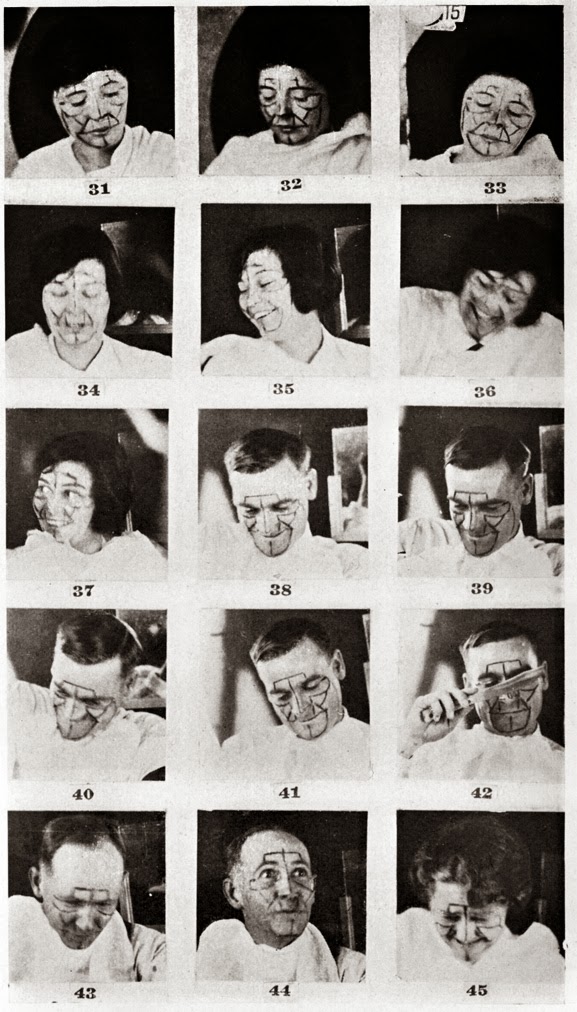Sunday, 16 March 2014
landis' facial expressions experiment (1924)
In 1924, Carney Landis, a psychology graduate at the University of Minnesota developed an experiment to determine whether different emotions create facial expressions specific to that emotion. The aim of this experiment was to see if all people have a common expression when feeling disgust, shock, joy, and so on.
Most of the participants in the experiment were students. They were taken to a lab and their faces were painted with black lines, in order to study the movements of their facial muscles. They were then exposed to a variety of stimuli designed to create a strong reaction. As each person reacted, they were photographed by Landis. The subjects were made to smell ammonia, to look at pornography, and to put their hands into a bucket of frogs. But the controversy around this study was the final part of the test.
Participants were shown a live rat and given instructions to behead it. While all the participants were repelled by the idea, fully one third did it. The situation was made worse by the fact that most of the students had no idea how to perform this operation in a humane manner and the animals were forced to experience great suffering. For the one third who refused to perform the decapitation, Landis would pick up the knife and cut the animals head off for them.
The consequences of the study were actually more important for their evidence that people are willing to do almost anything when asked in a situation like this. The study did not prove that humans have a common set of unique facial expressions.
Labels:
the human experiment
Subscribe to:
Post Comments (Atom)







KAMI POSTING CUMAN YANG TERBARU.. BOKEP TERBARU 2014
ReplyDelete►►►►► VIDEO BOKEP INDONESIA BERGETAR 2014 ¤¤¤
►►►►► VIDEO BOKEP MALAYSIA TERBARU LUCAH 2014 ¤¤¤
►►►►► KUMPULAN GAMBAR BUGIL ABG 2014 ¤¤¤
►►►►► BOKEP MANTAP JILBOBS ¤¤¤
►►►►► KUMPULAN BOKEP TERSELUBUNG TERBARU 2014 ¤¤¤
►►►►► KUMPULAN VIDEO ML VIAR INDONESIA ¤¤¤
►►►►► ARTIS BOKEP TERBARU JEPANG MULUS ¤¤¤
►►►►► DOWNLOAD BOKEP 3GP | MP4 | HD | KWALITAS TOP ¤¤¤
►►►►► MASUK SINI DIJAMIN BETAH CROOOT ¤¤¤
Replay